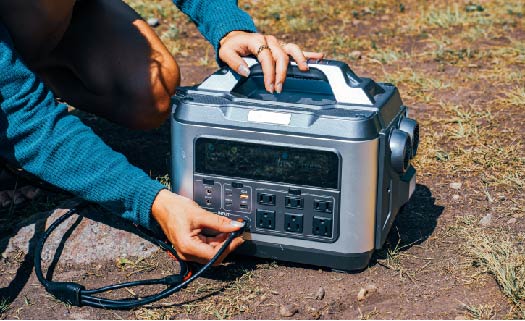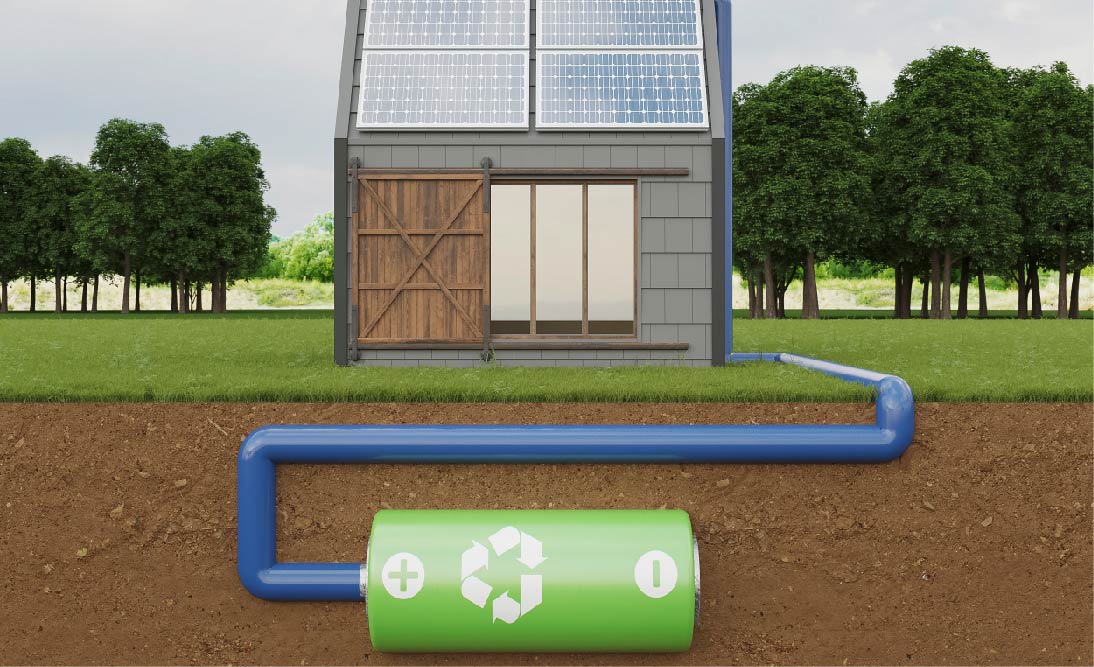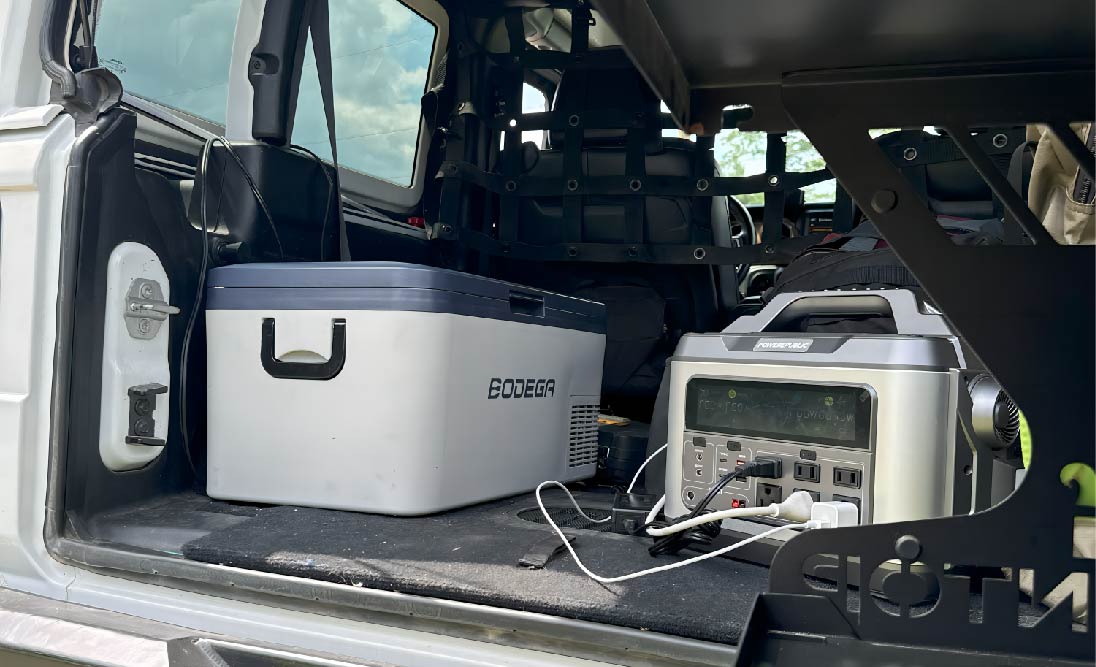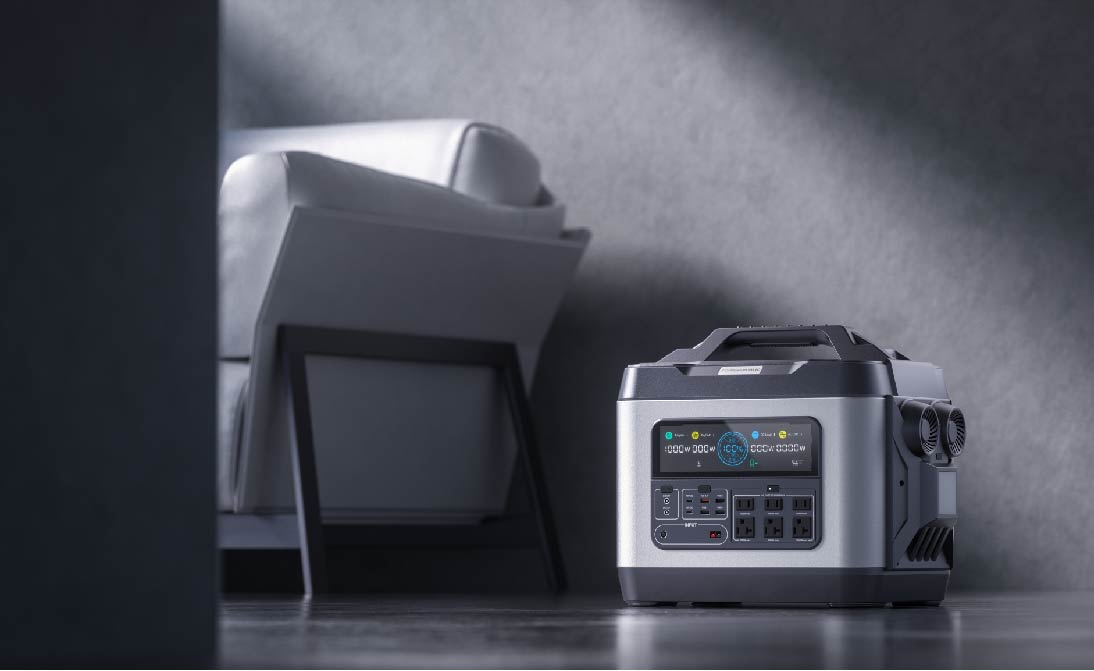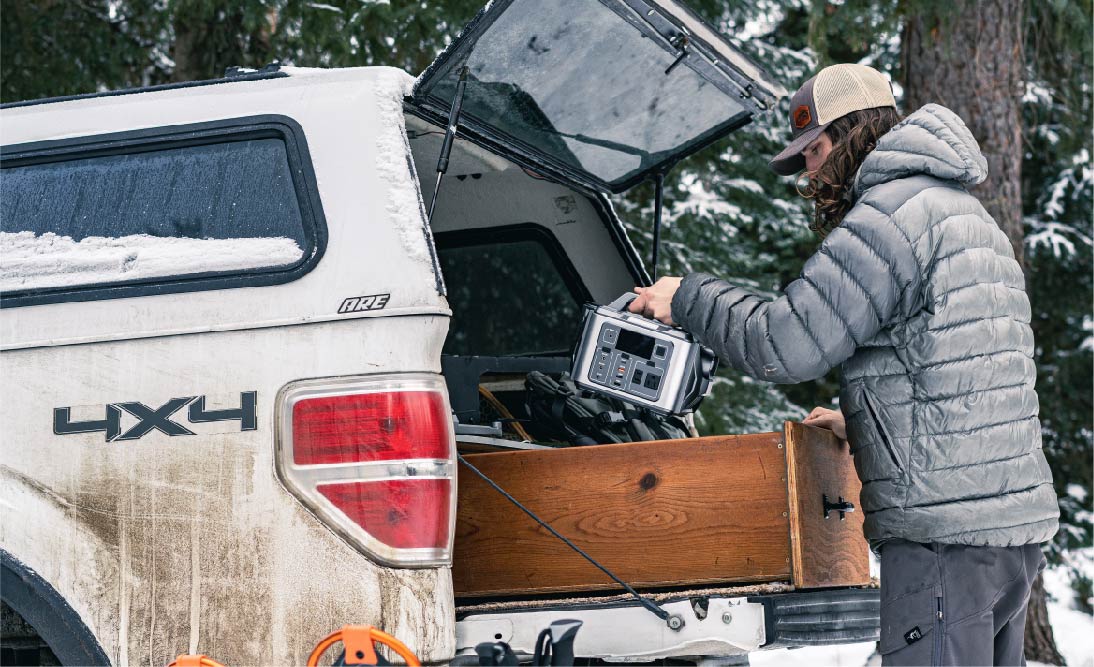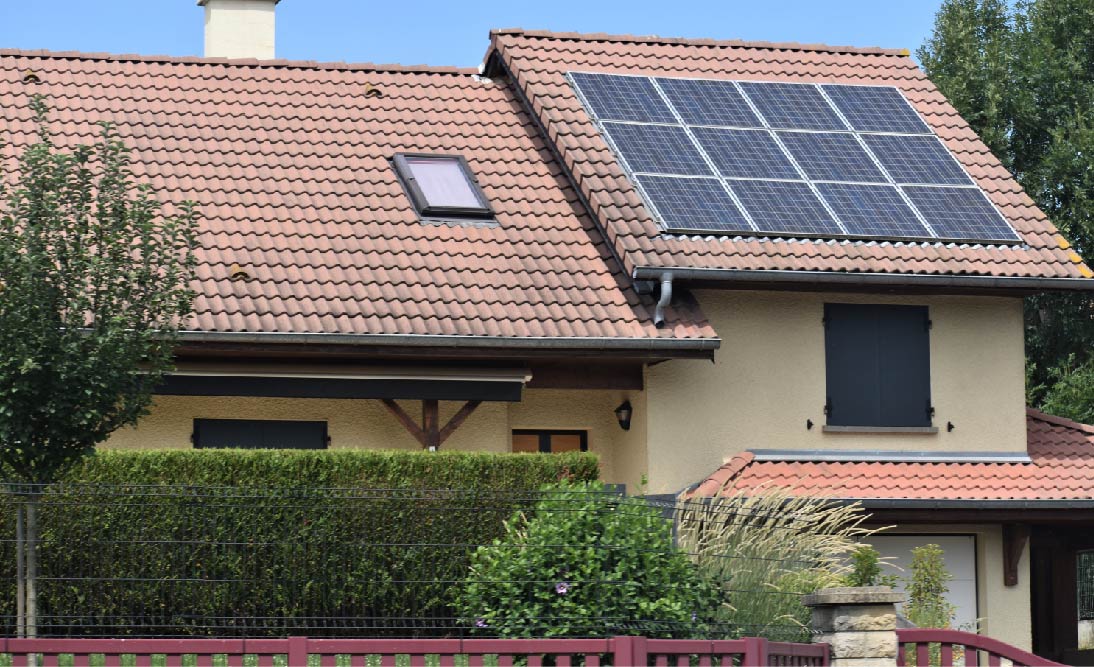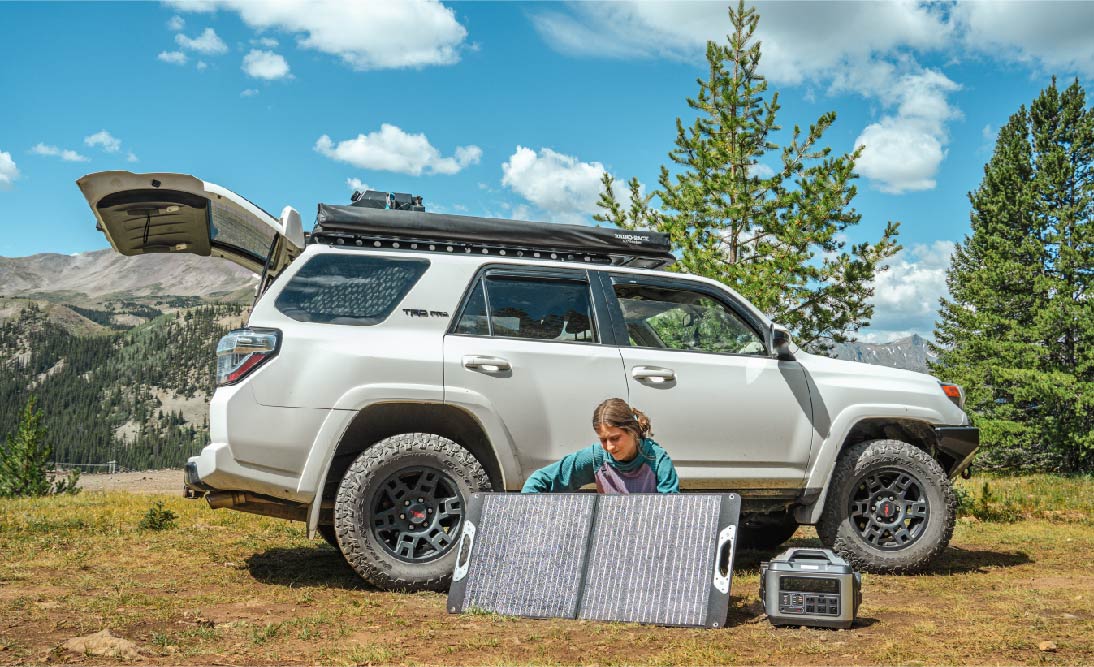Table Of Contents:
Living off-grid is an emerging lifestyle that invites people to explore the great outdoors, embrace a back-to-basics approach, and discover self-sufficiency. To fully embrace this lifestyle, reliable power systems are essential, with batteries playing a key role. There are various types of batteries suitable for off-grid solar setups, including popular options such as lithium-ion, LiFePO4, and lead-acid batteries. Choosing the ideal solar battery is crucial to ensuring your devices and appliances stay charged during power outages.
In this article, we will delve into the process of selecting the best solar battery for off-grid living. We will explore different types of batteries for off-grid solar setups, discuss how to make the best choice, examine the pros and cons of each option, and introduce POWEREPUBLIC solar generator kits as one of the recommended solutions for the best solar battery.
Types of Batteries for Off-Grid Solar Setups

When we mention types of batteries for off-grid solar setups, Lithium-ion, LiFePO4, and lead-acid batteries are the most common types. However, there are a few more types. Let’s take a look at each type so that you can have a general idea about what’s out there for you to choose.
Lead-Acid Batteries
1. Flooded Lead-Acid Batteries:
-
Traditional and cost-effective batteries require periodic maintenance, including water addition.
-
Suitable for areas with proper ventilation due to gas emissions.
2. Sealed Lead-Acid Batteries (SLA):
-
Maintenance-free and safer with no liquid electrolyte.
-
Includes Absorbent Glass Mat (AGM) for better high-current performance.
Lithium-Ion Batteries
1. Lithium-Ion Phosphate(LiFePO4):
-
Offers a long cycle life, high energy density, and stability.
-
Lightweight and compact, making them ideal for portable solar applications.
2. Lithium Nickel Manganese Cobalt Oxide (NMC):
-
High energy density and a longer lifespan are suitable for various applications.
3. Lithium Nickel Cobalt Aluminum Oxide (NCA):
-
High energy density, especially in high-performance applications.
Nickel-Cadmium (Ni-Cd) Batteries
1. Older Technology:
-
Well-established technology with a robust and durable design.
-
Wide operating temperature range, but concerns about toxic cadmium.
Saltwater Batteries
1. Sodium-Ion (Na-ion) Batteries:
-
Uses sodium ions for a more sustainable and environmentally friendly option.
-
Lower energy density compared to lithium-ion batteries.
-
Safer chemistry with non-toxic materials.
Flow Batteries
1. Vanadium Flow Batteries:
-
Utilizes vanadium ions in different oxidation states.
-
Scalable, offering a long cycle life and independent scaling of power and capacity.
-
Suitable for large-scale energy storage applications.
Lead Carbon Batteries
1. Combination of Lead-Acid and Carbon Technology:
-
Blends lead-acid characteristics with the advantages of supercapacitors.
-
Improved performance and longer cycle life compared to traditional lead-acid batteries.
-
Suitable for applications requiring both shallow and deep cycling.
Zinc-Bromine Flow Batteries
1. Flow Battery Technology
-
Utilizes zinc and bromine as active elements in a flow battery design.
-
Offers a long cycle life, high energy density, and scalability.
-
Ideal for stationary energy storage applications.
Supercapacitors (Ultracapacitors)
1. Electrochemical Double-Layer Capacitors:
-
Provides very high power density and rapid charge/discharge capabilities.
-
Shorter cycle life compared to traditional batteries but excels in applications requiring quick bursts of energy.
-
Suitable for applications where frequent, short-duration energy cycling is crucial.
The selection of a specific battery type depends on the unique requirements of the off-grid solar system, considering factors like energy storage capacity, available space, environmental considerations, and budget constraints.
Pros and Cons Of Off-Grid Solar Batteries

Pros of Off-Grid Solar Batteries
-
Energy Independence: Off-grid solar batteries liberate users from reliance on centralized power grids, offering self-sufficiency and continuous power in locations where grid connections are unavailable or unreliable.
-
Reduced Electricity Bills: Off-grid solar systems enable significant cost savings by generating electricity on-site, reducing or eliminating the need to purchase electricity from external providers.
-
Environmentally Friendly: Solar energy, harnessed by off-grid systems, is a sustainable and renewable resource, contributing to environmental conservation by reducing reliance on non-renewable energy sources and lowering carbon emissions.
-
Emergency Power Source: Off-grid solar batteries serve as a reliable backup during grid outages or emergencies, ensuring a continuous power supply critical for essential appliances, medical equipment, and overall safety.
-
Low Operating Costs: Once installed, off-grid solar systems have minimal ongoing costs. They require less maintenance compared to traditional backup generators, contributing to long-term financial savings.
-
Remote Power Generation: Off-grid solar systems are ideal for providing electricity in remote or isolated areas where establishing conventional power infrastructure is economically impractical or logistically challenging.
Cons of Off-Grid Solar Batteries
-
High Initial Costs: The initial investment for off-grid solar systems, including solar panels and batteries, can be relatively high, posing an initial financial barrier for some users
-
Limited Energy Storage: Batteries have limited storage capacity, requiring careful system design to meet energy demands, especially during extended periods of low sunlight or high energy consumption.
-
Weather Dependency: Solar power generation is influenced by weather conditions. Overcast or rainy days can result in reduced energy production, impacting the reliability of off-grid solar systems.
-
Space Requirements: Solar panels and battery storage systems demand significant physical space, potentially posing challenges in densely populated areas or locations with limited available land.
-
Battery Lifespan and Replacement Costs: Batteries have a finite lifespan, and replacements can be costly. Regular monitoring, maintenance, and proper usage practices are essential to maximize battery life and minimize replacement expenses.
-
Complex System Design: Designing an efficient off-grid solar system requires expertise to account for factors such as energy consumption patterns, weather conditions, and storage capacity. This complexity can increase installation costs and necessitate professional assistance.
How To Select The Best Solar Battery?

Selecting the right solar battery involves considering factors such as power needs, budget, capacity, cycle life, efficiency, scalability, and temperature performance. Each factor plays a vital role in determining the overall performance, longevity, and cost-effectiveness of the solar energy system.
1. Power Needs
-
Understanding your power needs is the first step. This involves determining your average daily energy consumption, usually measured in kilowatt-hours (kWh).
-
If your daily consumption is 30 kWh/day, your solar battery should ideally provide at least this much energy daily.
2. Budget
-
Setting a realistic budget is crucial, considering not only the initial purchase cost but also installation, maintenance, and potential incentives.
-
If your budget is $10,000, this amount needs to cover the entire solar battery system, including installation, potential maintenance, and any applicable incentives.
3. Capacity
-
The battery capacity determines how much energy can be stored and used during periods without sunlight. It's influenced by both your daily consumption and the desired autonomy period (the number of days the system can operate without sunlight).
-
If you want three days of autonomy and your daily consumption is 30 kWh, your required capacity is 90 kWh (30 kWh/day * 3 days).
4. Battery Cycle Life
-
Cycle life refers to the number of charge-discharge cycles a battery can undergo before its capacity significantly degrades.
-
If a battery has a cycle life of 5,000 cycles and you perform one cycle per day, it can last approximately 13.7 years (5,000 cycles / 365 days/year).
5. Efficiency
-
Efficiency is a measure of how much of the stored energy can be effectively utilized.
-
If a battery has 90% efficiency, it means you get 9 kWh of usable energy for every 10 kWh stored.
6. Scalability
-
Scalability assesses whether the system can be easily expanded to accommodate increased energy needs in the future.
-
If you plan to expand your solar system by 20% in the next 5 years, ensure the chosen system allows for easy scalability.
7. Temperature Performance
-
Consider the temperature range of your location and choose a battery that performs well in those conditions.
-
If you live in an area with extreme temperatures, opt for a battery technology known for its stability in such conditions.
By carefully considering and calculating these factors, you can make an informed decision, ensuring that the selected solar battery aligns with your energy needs, budget constraints, and long-term goals.
POWEREPUBLIC Solar Generator Kits as Solar Batteries

POWEREPUBLIC offers reliable and long-lasting portable power stations and solar generator kits for outdoor events and power outages. If you are searching for a solar battery for an off-grid setting, POWEREPUBLIC would be a good choice.
Our T1200+PV100, T1200+PV200, and T2200+PV200 are 3 excellent solar batteries for off-grid living. To better compare and know the details of them, please refer to the table below:
|
Solar Generator Kits |
Specifications |
Use Scenario |
|
Power Output: 1200W, Surge 2600W Battery Capacity: 1110Wh Battery Type: Lithium-ion with 800+ cycles to 80% Weight: 31Ibs/14Kg Dimension: 14.3*9.3*10.6 Inch Output: 13 output ports Solar Input: 220W Max. |
The T1200 offers a balance between power and portability, suitable for various scenarios:
|
|
|
Power Output: 1200W, Surge 2600W Battery Capacity: 1110Wh Battery Type: Lithium-ion with 800+ cycles to 80% Weight: 31Ibs/14Kg Dimension: 14.3*9.3*10.6 Inch Output: 13 output ports Solar Input: 220W Max. |
The T1200 offers a balance between power and portability, suitable for various scenarios:
|
|
|
Power Output: 2200W, Surge 4500W Battery Capacity: 2240Wh Battery Type: LiFePO4 with 3000+ cycles to 80% Weight: 64 Ibs/29Kg Dimension: 18.3*11.8*12.2 inch Output: 15 output ports Solar Input: 220W Max. |
The T2200 is designed for more demanding scenarios where extended power is needed:
|
We hope the table above will give a general idea of the functionality of POWEREPUBLIC solar generator kits. If you want to choose the best solar battery for your needs, consider POWEREPUBLIC as one of the choices.
Final Thoughts
In conclusion, selecting the best solar battery for off-grid living involves a careful consideration of factors such as power needs, budget, capacity, cycle life, efficiency, scalability, and temperature performance. Each type of battery, whether lead-acid, lithium-ion, nickel-cadmium, saltwater, flow, lead carbon, zinc-bromine, or supercapacitors, comes with its own set of pros and cons.
For those seeking a reliable off-grid solution, POWEREPUBLIC's solar generator kits, including the T1200+PV100, T1200+PV200, and T2200+PV200, offer a range of options tailored to different power requirements. These portable power stations provide a balance between power and portability, making them suitable for camping, emergency backup, or more demanding scenarios like off-grid living and remote job sites. The choice of selecting the best solar battery for off-grid living ultimately depends on individual needs, ensuring a seamless integration of renewable energy into the off-grid lifestyle.













